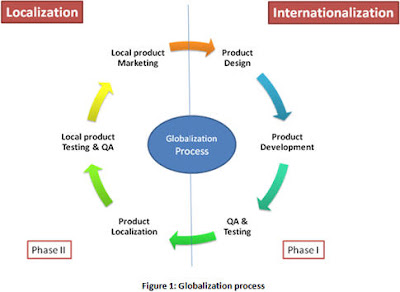Localization,Internationalization Testing

Learn what is Localization Testing and How to perform it: It is very common to find websites that are now available in multiple languages. Global brands have now recognized that the only way to connect and create value is by introducing their business to locals in the language that is truly local. This process of adapting a product to different language, region and locale is called localization. A localized product creates more business opportunities and caters for growth and expansion. However, many organizations make the mistake of adapting localization towards the end of the development process or just before the product launch. In order to localize a product it is very important to find out if it is internationalized. Confused? An internationalized Product/application design is the one that can accommodate localized content such as characters in non-western letters, double byte languages, ability for text to expand as in European languages and contract as in Asian lan...
